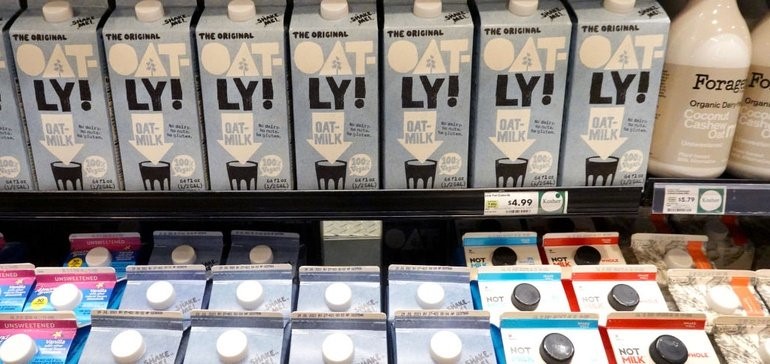Oatly plans 3 new facilities by 2023 to combat supply shortages
Published Dec. 7, 2021
Sarah ZimmermanAssociate Editor
Scott Olson via Getty Images
First published on
Dive Brief:
- Oatly is building out its global manufacturing footprint “at an unprecedented pace” to address supply shortages and meet the growing demand for plant-based milk, CEO Toni Petersson said on the company’s Q3 earnings call.
- Three plants are set to open in the U.S., U.K. and China in 2023, which are expected to produce 450 million liters (118.9 million gallons) of product, according to COO Peter Bergh. The company already opened three facilities in Utah, Singapore and Ma’anshan, China, earlier this year.
- Oatly had to rely more on contract manufacturers this year after struggling to build inventory and meet global demand. Supply issues also pushed the company to prioritize production of oatmilk over other dairy-alternative food products.
Dive Insight:
Contract manufacturing has allowed businesses to quickly build inventory and reduce supply chain risks during the pandemic, but the higher cost involved is pushing more companies to move production in-house. Clorox, for example, plans to rely less on outside manufacturers to control costs as demand slows.
Oatly’s new factories come as the company expects inflation to accelerate in 2022 for key materials such as oats and rapeseed oil. Poor harvest conditions in Canada are expected to drive a major increase in the price of oats by as much as 35% depending on the region, according to CFO Christian Hanke.
“We expect the geographical localization of our production capacity, including bringing more of the production in-house, to provide some offset to inflationary pressures,” he said.
Oatly aims to self-manufacture 50% to 60% of total volume, with copackers making up 10% to 20%. In the first nine months of 2021, self-manufacturing was 21% of total volume compared to co-packing at 47%. The company plans to use more hybrid manufacturing as a way to reduce its reliance on copackers.
But supply chain issues and temporary hiccups in production have also prevented the company from ramping up its capacity plans as quickly as expected.
U.S. production was slowed after the company’s new self-manufacturing facility in Utah experienced mechanical and automation issues that were unable to be repaired in a timely manner due to supply chain disruptions. Meanwhile, a potential, unspecified quality issue at Oatly’s Landskrona, Sweden, facility in November could also lead to the destruction of product.
Oatly is also seeing longer lead times for equipment necessary for its capacity expansion plans, which have already delayed some projects in 2022.
Still, bringing more manufacturing in-house will also allow Oatly add much needed capacity in the long-term as demand for dairy alternatives experiences explosive growth. Supply constraints pushed the company to scale back distribution in 12 countries in Europe, the Middle East and Africa.

